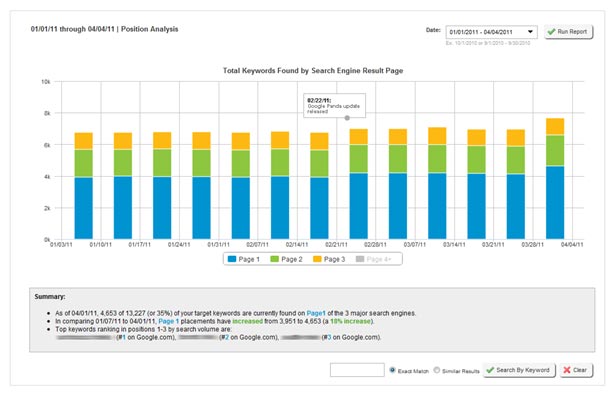iCrossing does online marketing for numerous big brands, and says it has noticed some trends in which some of these brands have either risen in rankings or remained flat since the Google’s Panda Update, for keywords where other sites dropped off the grid.
Do you think Google got it right with Panda? Tell us what you think.
iCrossing counts plenty of big brands among their clients. Among them are: AAA, Auto Trader, BMW, Chevron, Coca-Cola, EA Games, eBay, FedEx, Hyundai, Kia, Marie Claire, Mary Kay, MasterCard, Mazda, Nokia, Porsche, LEGO, and Toyota, to name a few.
Collin Cornwell, VP of natural search at iCrossing, has shared some data looking at a couple examples of big brands that have followed the trend. He would not get into names, but calls them a “premier travel and hospitality client,” and a “big-time banker.”
It’s worth noting that these companies also saw no changes in Bing or Yahoo, and tha we don’t know what the content for the pages in question actually looks like – a key piece of the puzzle, obviously.
Here’s some data from the travel site:

According to iCrossing, Page 1 ranking increased 18% from the big brand from the beginning of the year, and 6.3% from when Panda was released, while brands like Suite101 and CheaperThanHotels.com saw 96% and 95% drops for the same keywords.
And some from the Bank:

The bank saw an increase of 45% for all non-branded keywords from the beginning of the year, and 10% increase in Page 1 placements since Panda. Smaller brands saw 94% – 84% drops.
“Google has been favoring big brands for years – starting with its ‘Vince Update’ back in 2009 and then again in 2010 when Google decided to include BRANDS in related searches,” said Cornwell.
“While the Panda update wasn’t meant to affect large brands directly, the change(s) seem to have had an indirect impact as the ‘lower quality’ sites continue to slip down in the search engine results pages,” he added.
By nature, big brands tend to get more links, more sharing, and more engagement. They also generally have more resources to apply to marketing tactics, web development, and design – all of which can play directly into how their content is viewed in Google.
The question is whether or not this approach works. Is content quality synonymous with brand recognition? No, but it is related. Brand recognition is directly related to trust, but not all big brands are well-liked or trusted by everybody. This is why Google’s domain-blocking features and the +1 button are perhaps two of the most important updates to Google’s search quality practices we’ve seen in a long time.
Quality is in the eye of the beholder, and these features give more say to the people. That said, there is a great potential for both of these to be abused by users. Google recently said, “as with any new ranking signal, we’ll be starting carefully and learning how those signals affect search quality over time,” regarding the +1 button.
Here’s what Google’s Matt Cutts had to say about big brands ranking in Google a couple years ago:
He said he disagrees that big brands always do well, and that Google often hears complaints from big brands who don’t think they’re doing as well as they should.
How significant is brand to content quality? Share your thoughts.

